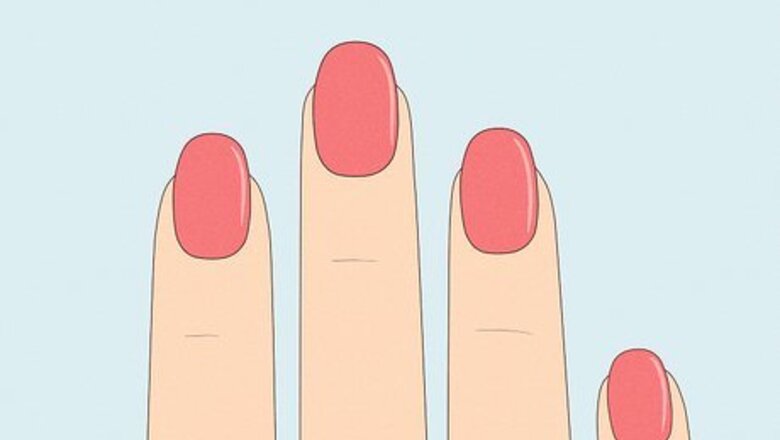
views
- Select a round nail shape in a short to medium length.
- Type with the pads of your fingers, instead of using the tips of your nails.
- Keep your hands still while typing, and stretch your fingers to hit each key with precision.
Select a round nail shape.
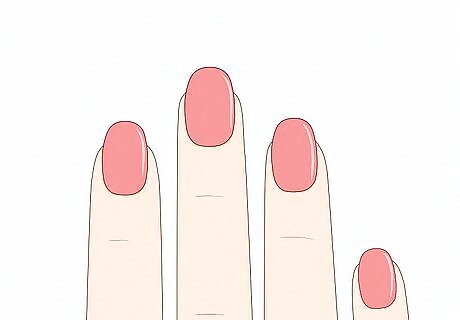
Choose a shape that mimics your natural nail. If you’re a beginner, round nails are the easiest shape for typing. They’re less likely to chip or hit other keys, making them quite comfortable and practical. Start with short to medium length nails, then gradually increase the size as you adapt to them. Stiletto nails are the next best option because they aren’t super wide. They do become more narrow towards the tip, but it doesn’t interfere with typing. Square nails look stylish, but you may run into problems when it comes to typing. Their width makes it easy to hit multiple keys, decreasing your overall accuracy and speed. Coffin nails are wide and tapered, making them the most difficult nail shape for typing. Unless you’re an experienced typist, choose another shape until you’re comfortable typing with longer nails.
Type with the pads of your fingers.

Flatten your finger to hit the center of each key. When it comes to typing with long nails, you might have to retrain yourself to touch the keys with the base of your fingers. Imagine leaving an even fingerprint in the middle of each key, instead of typing with the tips of your nails. Use gentle pressure to ensure your nails stay intact and don’t hit the keyboard.
Type with minimal reach and movement.
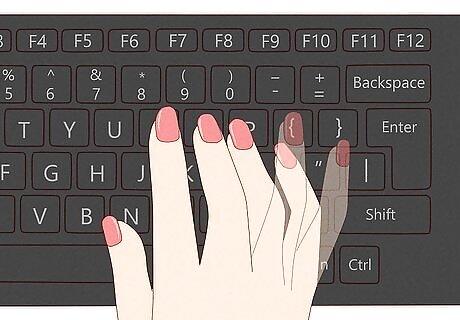
Keep your hands still and move your fingers minimally. To prevent your nails from snagging on the keyboard, try to mimic the movements of a pianist. Focus on hitting the keys with the reach and flexibility of your fingers, and keep your hands and fingers as flat as possible. If you need some inspiration, watch a piano performance online and observe how the pianist glides their fingers over the keys. You can even exercise your hands and fingers like a pianist to warm up your hands for typing. Rest your forearm on a table and gently pull each one of your fingers back towards your wrist, then hold this position for 15-30 seconds to loosen up the muscles in your fingers.
Maintain proper posture.

Sit up straight and rest your hands flat on the keyboard. Position your hands as parallel to the keyboard as possible, and make sure your monitor is set at eye level. Maintaining good posture reduces strain on your arms, wrists, and fingers, allowing you to type more comfortably and accurately with long nails. If you’re struggling to maintain good posture, you might want to invest in a standing desk to help keep your spine elongated while you type.
Follow the correct finger placement for typing.
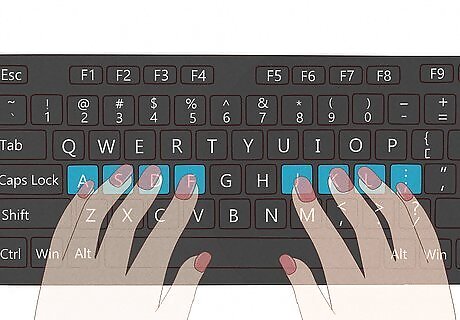
Review your finger placement on a modern QWERTY keyboard. Typing with the correct finger placement can help limit the movements of your hands (and prevent your nails from getting stuck in the keyboard). To position your hands on a keyboard correctly: Place your left pinkie on the A key, your left ring finger on the S key, your left middle finger on the D key, and your left pointer finger on the F key. Then, place your right pinkie down on the semicolon and colon key, your right ring finger down on the L key, your right middle finger down on the K key, and your right pointer finger on the J key.
Aim for precision over speed.
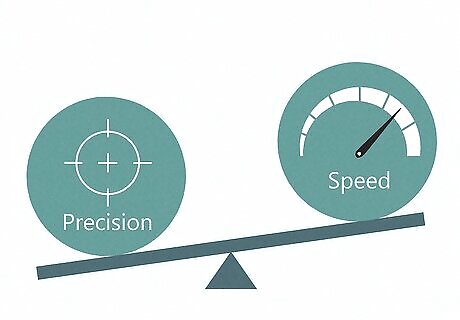
Slow down and hit the right keys, then work on increasing your speed. Although it’s tempting to type quickly with long nails, speed means nothing without accuracy. Make sure you’re typing with few errors before attempting to meet your usual WPM (words per minute). With practice, you’ll get more comfortable typing with long nails, increasing your pace and precision. Remember to be patient when you’re retraining yourself to type with long nails. Typing slowly is more beneficial than speeding through with loads of typos. To increase your typing speed, practice typing the same paragraph or passage over and over again, or find a free typing game online.
Take regular breaks to protect your wrists.
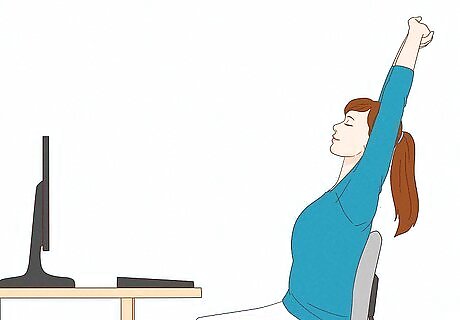
Rest every 30 minutes to stretch your hands and fingers. To prevent discomfort, try to take a 5-minute break after every 30 minutes of typing. This ensures you maintain the proper posture while working, which can help you type more efficiently with long nails.
Use an ergonomic keyboard.
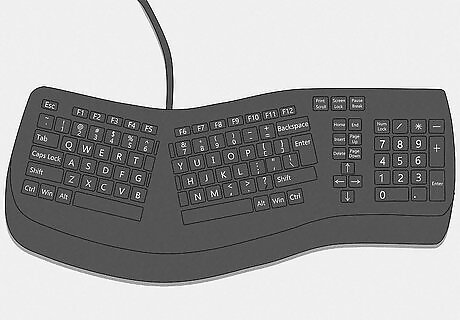
Select a keyboard that includes round, raised keys. No matter what nail shape or length you have, an ergonomic keyboard is designed to create a more comfortable typing experience. Look for keyboards that feature “easy to press” keys so you can effortlessly hit them with the pad of your finger. Since an ergonomic keyboard has a different format than a standard keyboard, it may take a little time to get used to.
Purchase a plastic keyboard cover.

Type with a plastic keyboard cover to reduce loud sounds. If you’re working in an office, typing with long nails can be extremely distracting. Place a plastic cover over your keyboard to keep your noise level down (and improve your concentration). Since you don’t have to worry about annoying other people, you can type as quickly as you like.
Choose a trackball mouse.

Use a trackball to maneuver your mouse more easily. With a trackball mouse, you just need to roll the ball at the edge of your mouse to scroll through a webpage. Since the mouse remains in place while you use it, you’re less likely to scrape or damage the edges of your long nails.
Use a stylus pen.

Type with a stylus when using a phone or tablet. This pen-like tool helps you type a typo-free text or email on touchscreen devices (which can be incredibly difficult with long nails). To use a stylus, press the tip of the tool over the keys you wish to type. Before purchasing your stylus, make sure it’s compatible with your device, and choose one with a soft foam-like tip to avoid scratching your screen. Alternatively, make a stylus at home by attaching a small piece of sponge to the end of a ballpoint pen.













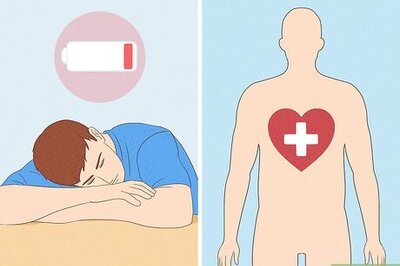


Comments
0 comment